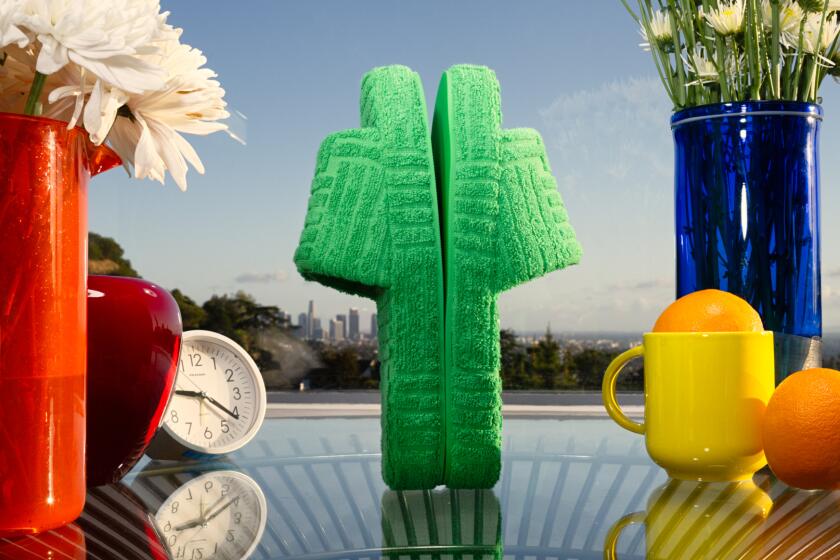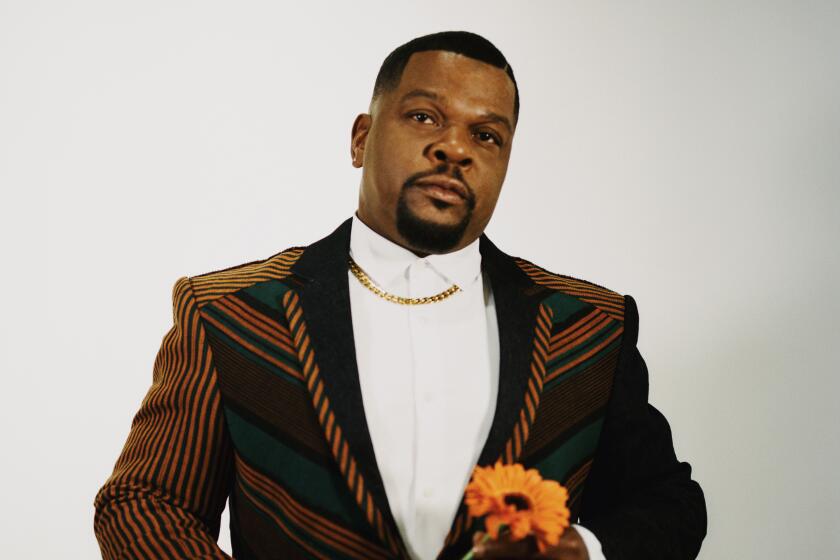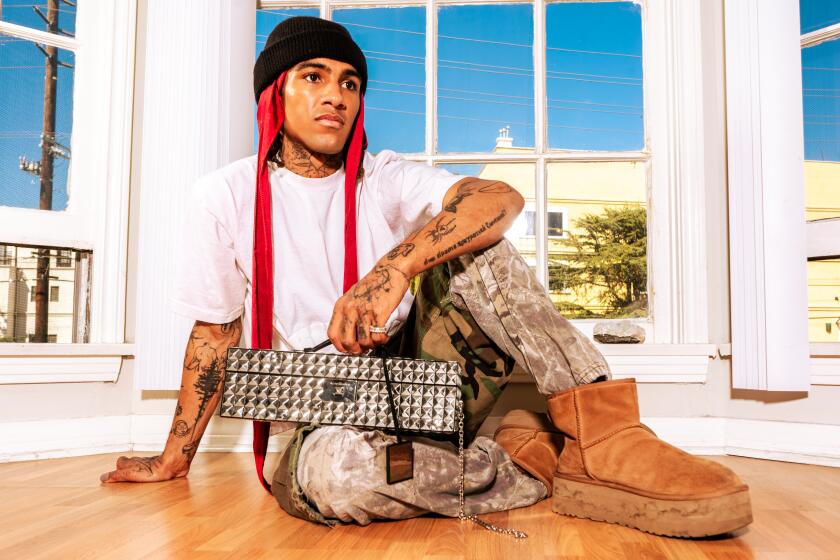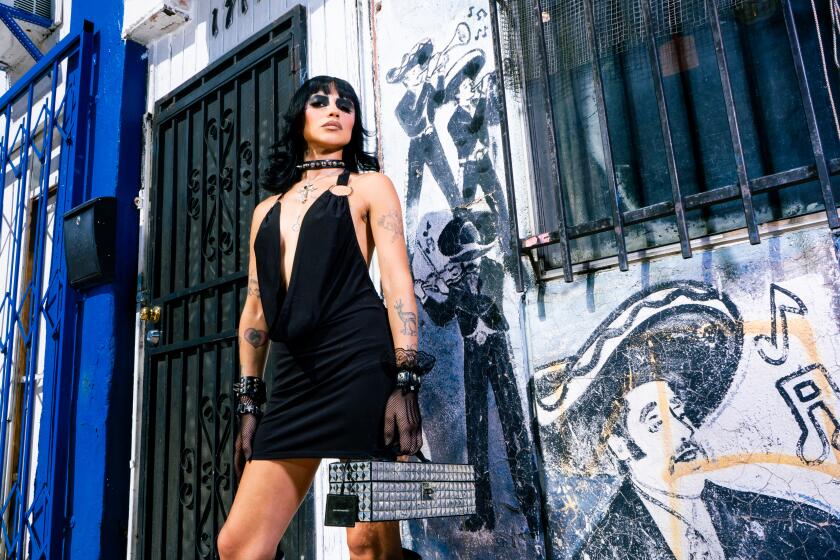
This story is part of Image issue 17, “Offering,” a special gift from L.A.’s creative community to a city that seemingly has it all. Read the whole issue here.
A consistent routine is the closest thing Channel Tres has to a religion. Every morning starts with a green smoothie: beets, celery, kale, spinach, ginger, lemon, apple, spirulina powder and Alkaline water. Then comes the gym, where he’s coming from now and where he goes every day, almost always going in on a deep stretch or losing himself in a dance class. He journals. Therapy is once a week. There’s a life coach too. Tres grew up in the church, where he cut his teeth as a musician playing drums since age 5. But as of late, he’s seeking enlightenment in the mundane, some semblance of power in a daily practice.
In the last year, Tres’ relationship with himself has changed. You might describe it as a prolonged moment of transcendence. You might also notice his relationship to the music he makes has been completely reconstructed. At 31, he finally feels like he can be himself as an artist: “I don’t think I’ve ever participated in my life the way I wanted to like I am these days.”
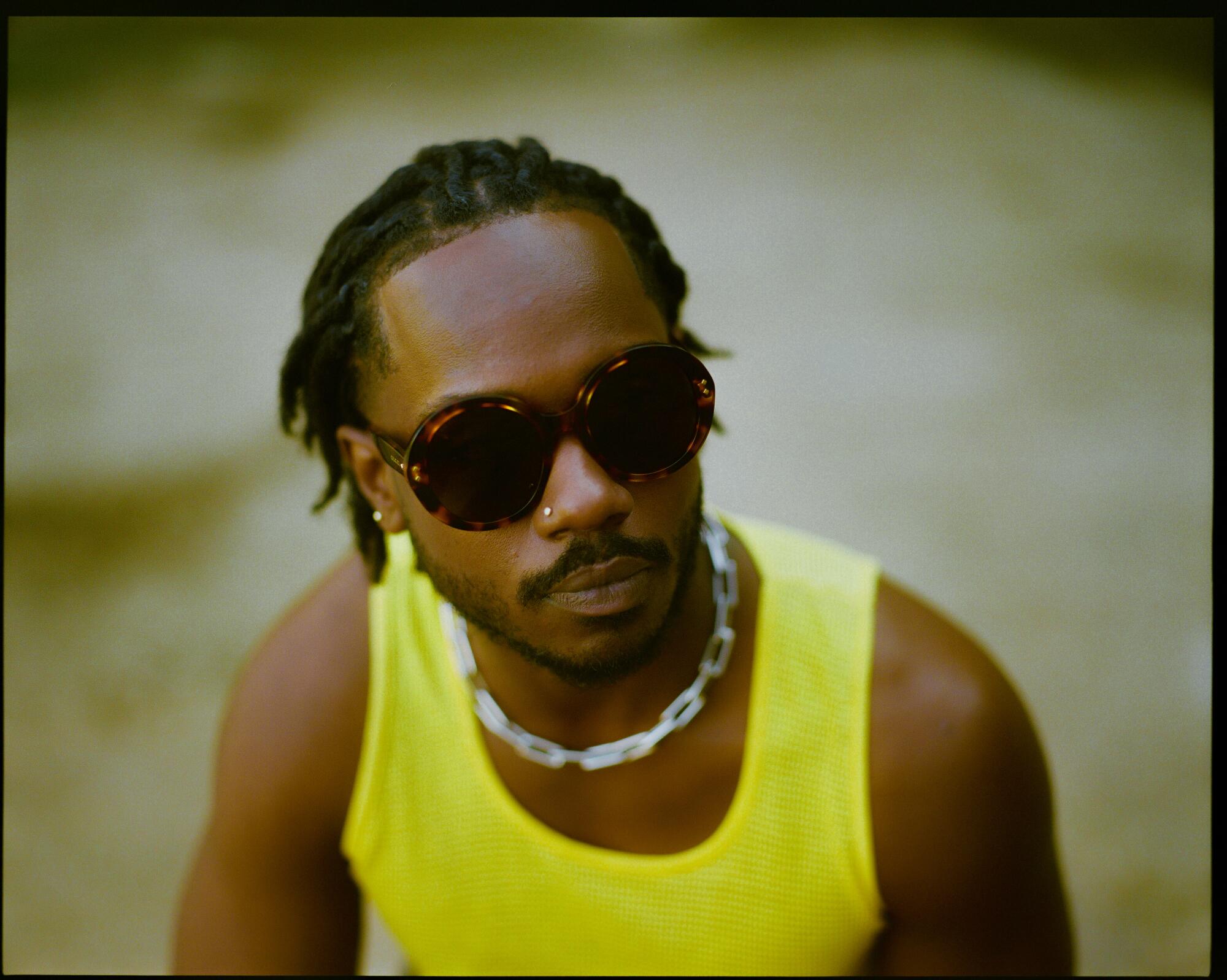
When Tres began releasing music under his moniker in 2018 — producing, writing and singing on sensual, grounded house bops coursing with a liberated L.A. feel — he was almost immediately hailed as an artist on the precipice of something special. He made the kind of music that people needed to hyphenate in order to explain: “-inflected,” “-inspired,” “-infused.” His debut EP, “Channel Tres,” and breakout hit, “Controller,” sounded like house, evoked hip-hop, felt like sermon. His signature baritone left an imprint on your brain that you couldn’t shake for days. Your body is a game / f— the lames, f— the fame / I am the controller. (“So much has changed since then,” Tres says, slyly.)
His “Black Moses” EP would land him a spot among a packed Coachella lineup in 2020. (The performance ultimately was postponed until 2022, because of the pandemic.) But at the time, he wanted so deeply to find a different way of being Channel. He hoped to lean into a more fluid way of living, dressing and making music. There was a magnetic pull to become healthier. He had visions of himself being the kind of performer who wore glitter onstage, gyrated his hips, rolled his torso, made shapes with his hands. Back then, the theme of his life was desire. Today, it feels closer to fulfillment, or something adjacent to it. It was like he had a crystal ball, or inclinations so specific they were impossible not to realize.
There were various legacies — Detroit and Chicago house, Compton hip-hop, gospel — that he drew inspiration from, but building something for himself, while adding to what came before, was a different story. He wanted to create something that could serve as an access point to the histories, but ultimately felt singular to L.A., to the moment and to his own experience.
For Channel Tres, the message beamed down crystal clear some time at the end of 2021: “I need to figure out how to be an artist.” When the pandemic hit, he was still making music. He released the EP “i can’t go outside,” a literal (and metaphoric) reflection of the times, which included collaborations with Tyler, the Creator and Tinashe. But in the months that followed, Tres negotiated his way through a dark night of the soul. His drinking and drug use passed the point of being recreational. He began experiencing the kind of loneliness that seeps into your muscles, your bones. He became sick, he says, both physically and mentally.
He went on tour with Thundercat during this time — his first big tour since restrictions lifted. And the moments spent on the road gave him a blueprint for what it might take to emerge from the personal struggles he was experiencing. “He’s sober and he was having a great time,” Tres remembers about the multi-hyphenate musician, whom he considers a close friend. “I was trying to do the same s— I was doing at home on the tour bus, and it wasn’t working. I was miserable. That tour ended at the end of the year. I ended up at home during Christmas and I was alone. I was like, ‘OK, I need to do something different.’”
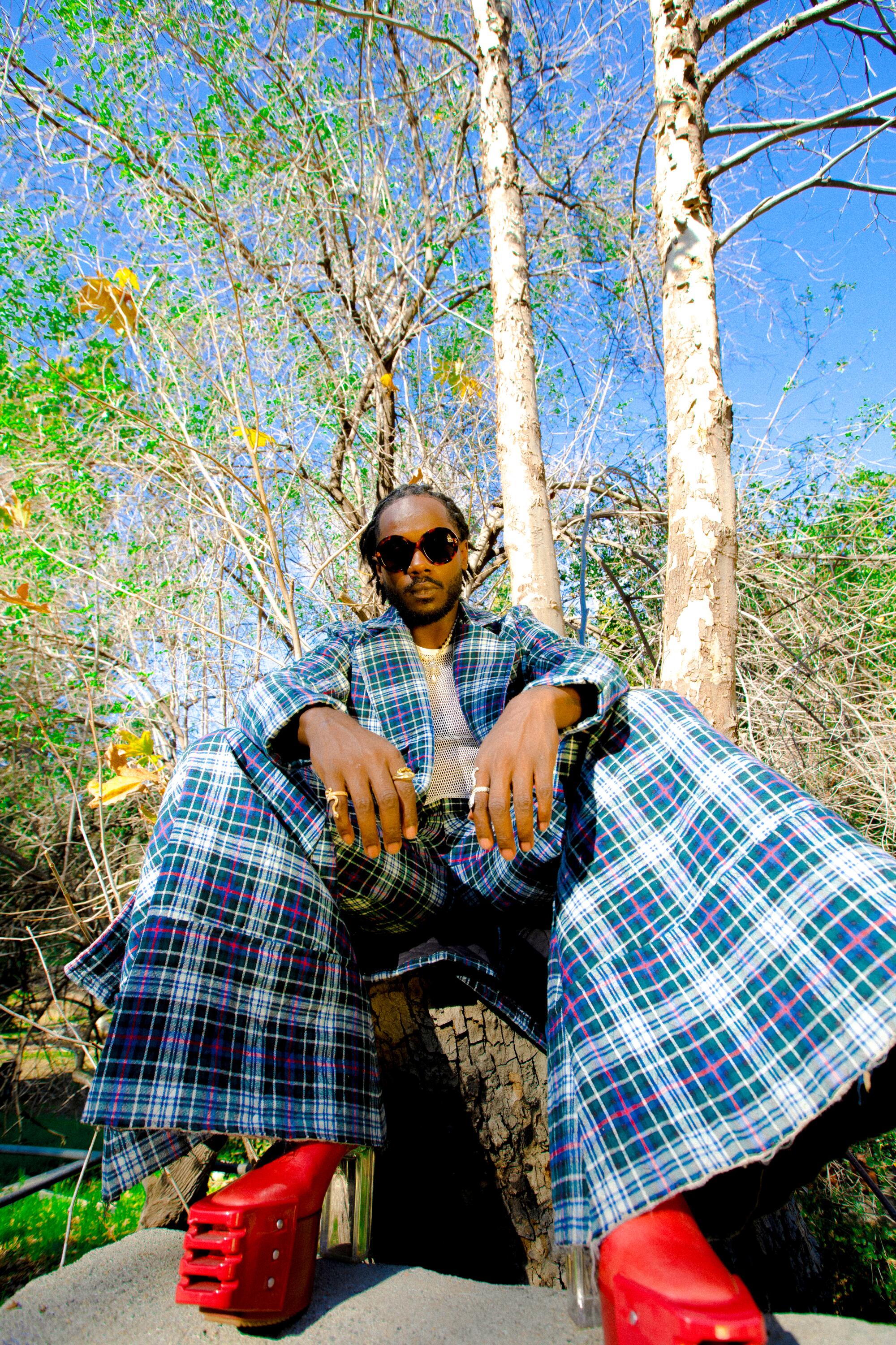
Tres made a list of goals for himself. He stayed in more, smoked less, cut off friends in the name of boundaries and became comfortable with being alone. He got the word “manifest” tattooed across his neck. Exercise became essential. He studied the ways of artists he admired, like Prince, and spent time with Tyler, the Creator in the studio, which made Tres want to adopt a similarly unapologetic attitude. There came a point when a surrender was in order. “I gave power to the music and the vibes,” Tres says. “I was just like, ‘Yo, whoever is out there — God, whatever — I give myself to this.’ It was kind of ceremonial for me.”
Tres’ great-grandparents had him in church almost daily while raising him. But as he came of age, his idea of God took shape through sound. “I feel it in music,” he says. “That’s how I relate to it. I made peace with that because I thought God was this person that wanted to smite me. Like, ‘I’m going to hell because I’m wrong.’ But I feel like I’ve been through hell. What else can you get out of me at this point?”
He got to work. The result was “Real Cultural S—,” a musical marker of where Tres has been and where he’s going. Due out Feb 24., the EP is an outward manifestation of an internal reach toward something that feels like truth. “6am,” a call back to his bender era, is a high-energy, debaucherous ode to the afters. “We ain’t leaving,” Tres asserts in the track, as he sings about making money and making a mess. On the flip side, “All My Friends” is a wholesome dedication to reunion. And “Just Can’t Get Enough,” sampling Teddy Pendergrass’ classic “The More I Get, The More I Want,” is Tres’ cheeky take on a love (or lust) song, which ultimately is about wanting more — out of relationships, out of life.
“Real Cultural S—” is Tres’ latest push back against labels. Having grown up between Lynwood and Compton, Tres — born Sheldon Young — was a lifelong musician but didn’t want to be pigeonholed into being a rapper. He felt protective early on, when the media was overemphasizing where he is from with headlines like “... from South Central to stardom.” At the same time, he hadn’t begun to process some of the painful memories the city held for him.
It’s taken time and reflection to realize that Compton has made him into the musician he is. Tres shouts it out right out the gate in the intro track to “Real Cultural S—,” “Sleep When Dead.” He’s also dubbed his own genre “Compton house.” L.A. Grammy-nominated jazz musician Terrace Martin, who Tres released the bouncy new single “Chucks” with earlier this month, says the musician is the latest part of the city’s iconic musical legacy. “He’s part of the Compton lineage,” Martin says, matter-of-factly. “The N.W.A.s, the Kendrick Lamars, the YG umbrella. It’s not shocking that a universal superstar is from Compton.”
Martin says his time in the studio with Tres served as an introduction to house music that he felt immediately connected to. There was a recognition in Tres’ voice, in the way he shouted out his city over beats tinged with G-funk.
When Tres decided to study music at Oral Roberts University, a private Christian college in Tulsa, Okla., it was at first an attempt to break away from L.A. and its musical expectations. Oklahoma allowed him to circumvent becoming “an L.A. n—,” Tres says. In other words: “Everybody dressed up like they doing something and they ain’t doing s—.” He learned to play piano, started doing musical direction, making beats and writing songs.
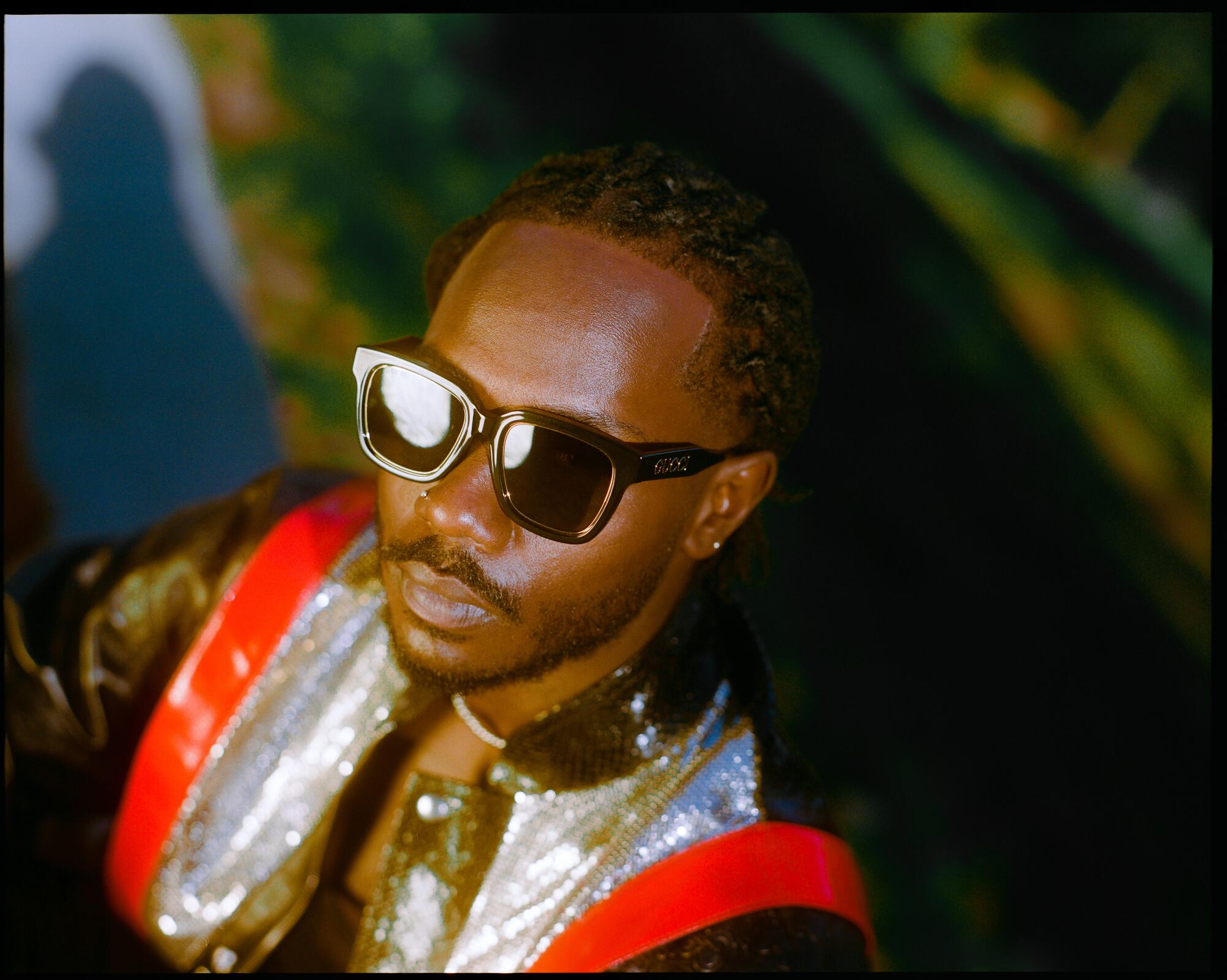
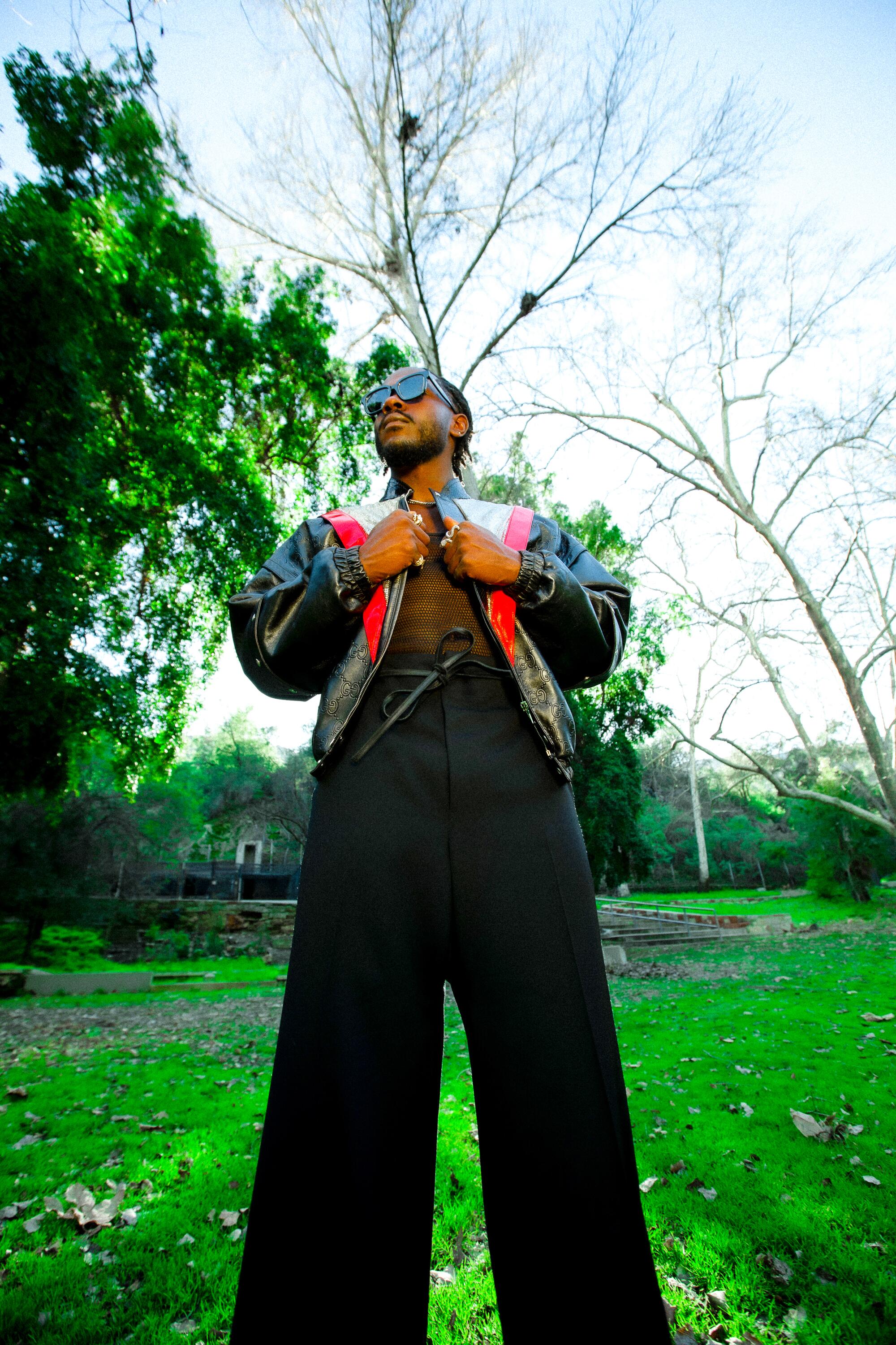
It was in college that he discovered Detroit house legend Moodymann, a.k.a. Kenny Dixon Jr., who was born in L.A. There’s a particular Red Bull Music Academy interview, where Moodymann waxes poetic about his purpose and his MPCs while getting his hair braided, that was especially moving for Tres. This opened the floodgates. Tres’ instinct to use his resonant baritone over a deep, enveloping house beat in a way that wasn’t exactly rapping, and wasn’t exactly singing either, had a lineage. That this was a Black queer genre, a practice tracing back decades with roots in revolution and escapism and unity, made Tres feel simultaneously connected to something bigger, and open to build on that history with his own experiences and hometown. In the years that followed, he collaborated with artists including JPEGMAFIA, Disclosure, Robyn and Tove Lo. Quickly he counted Elton John a fan.
At first, “Real Cultural S—” was being billed as Tres’ first full-length album. But something changed in the process — mostly his outlook on the music he makes and himself. That project is still in development, he says, in the same way he is. “Real Cultural S—” is something to hold people over until then. “I don’t believe in piecing some s— together because momentum is good and putting it out,” he says. “I’m damn near a performance artist because you’re growing with me as I’m growing.”
What a Channel Tres EP, song or performance ultimately does is get you to dance. His specialty is providing you with the tools to get free by moving your body. There’s something inherently healing about movement, the reason it’s been so integral to his art and life for the last year. Through fall and winter, he was performing songs from the project on his first headline tour, where footage of him in leather pants, a glitter crop top and metallic opera gloves dominated Instagram feeds and group chats. He moved in a way that seemed to communicate that a weight had been lifted off his shoulders. Or he decided to put it down. At the Fonda in December during his tour’s L.A. stops, swirling his shoulders, chest and torso alone on a staircase, he looked out to see the audience dancing in his reflection and it felt like completion. “I’m very adamant about getting the f— up and moving,” he says. “You can’t stay pent up.”
He had a clear vision for what he wanted his first headline tour to look like, which puts him back in Europe this March. Inspired by watching countless hours of Bobby Brown, Prince, Kool & the Gang and Janet Jackson performances, he traveled the U.S., U.K. and Europe, selling out multiple dates including three nights in L.A. He wanted his show to be a production, an exercise in being extra. Working with the choreographer Craig Fishback, he used his body as a prop onstage, pulsing and pushing, rising and falling. You’re listening, but you’re also watching — there is so much to see. “The show is less about me and it’s more about the feeling that you give to the people,” he says.
“His performance sounds close to the records,” says Martin, who attended one of the L.A. shows. “I feel like I’m listening to them, I’m enjoying them. I’m seeing his energy. Everybody’s involved. He’s what I feel like our next superstar is. He can walk into a room with nothing and demand everybody’s attention. You just know he’s special.”

For Tres, the L.A. stops were some of the most significant. They felt like a full-circle moment, an important step in this healing journey he’d been on with himself for the last year. “This city hurt me a lot,” he says. “And then the city also healed me. To be at home and to do that, all that pain, all that s— I went through as a kid, everything just came to a moment. And it sold out. People know the words. I’m like, ‘Who are you? Who are these people?’”
Thundercat hit up Tres on the last night of his tour’s L.A. stop and said he was pulling up. Next thing Tres knew, his friend walked into his dressing room with Erykah Badu. “One of my dancers was lighting palo santo and we just looked at each other like …” Tres and Erykah talked about the singer Teena Marie over a cigarette. “It felt like almost a blessing,” he says. The photo of Thundercat, Erykah Badu and Ty Dolla Sign in the room with Tres before his performance that night was proof: “I’m here.”
Styling: Keyla Marquez
Makeup: Victoria McGrath

